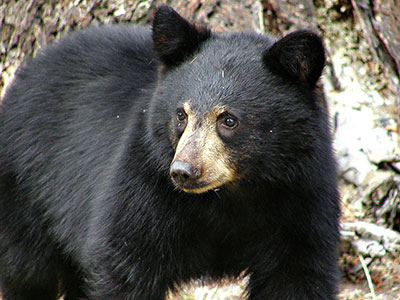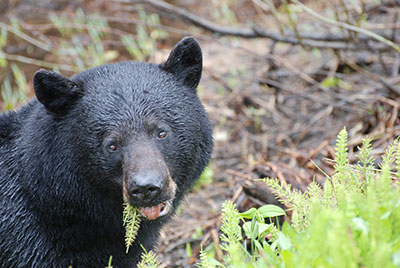
This time of year, we'd all appreciate a little more in bed, and our Critter for the month of December certainly embodies that better than anyone: the American Black Bear!
While the black bear is the only bear endemic to Maryland, predominantly found in the western section of the state, their range extends across the continent, as far North as the Arctic circle and South into central Mexico. Although they were previously found throughout the central US, they are extirpated through much of their former range. Black bears have a preference for forested areas, but can adapt to a variety of environments. They are known as generalists, meaning they can live in diverse conditions and make use of a wide range of resources, and subsequently there are a whopping 16 subspecies of black bear found across North America!
Black bears are known to hunt, however the species is omnivorous, and up to 85% of the black bear's food comes from plant sources. In Maryland, nuts such as beechnuts and acorns, berries and other forest fruits, insects, roots, carrion, and small animals make up a majority of a bear's diet. Acorns are in fact the most important food source a Maryland bear relies on in building the up to 30% body weight increase they need going into the winter! However, in other areas of their range, black bears may eat such diverse items as prickly pear cacti, salmon, moose calves, bird eggs, grasses, and assorted wetland vegetation. Their ability to feed opportunistically means that black bears also often choose to forage in human-managed beehives and, unfortunately, trash receptacles, a tendency that causes danger to the animal. The autumn, which is a time of hyperphagia ("extreme eating") leading up to denning, may be a time for increased human-bear interactions as a result.

Black bears' use of energy through cold months is highly efficient, although they may lose up to 40% of their body weight during the winter. In parts of their range with a defined winter, they start "denning" in October, and may remain there for as long as 8 months in colder regions. During denning, a bear's heartbeat drops to an astounding 8 beats per minute from 40-50 bpm. This reflects a decrease in their metabolic rate that allows them to go for months without eating. While their metabolism drops during this time, a bear's ability to heal its wounds does not appear to slow, and the bear is aware of the passage of time based on ambient light and temperature variations. In fact, during mild winters, a bear may even leave their den to forage, and while many people think of this time as a 'deep sleep' for animals, bears are relatively active during this period. In January, Maryland black bear mothers give birth to between 1 and 4 small cubs, weighing up to a pound each, which she will nurse until the snow melts and time comes to leave the den. So while it's unlikely to see a black bear during this time of the year, when our thoughts stray to this cultural symbol of the winter months we can just as easily imagine them as we are, looking out at the snow from the warmth of a den surrounded by family.